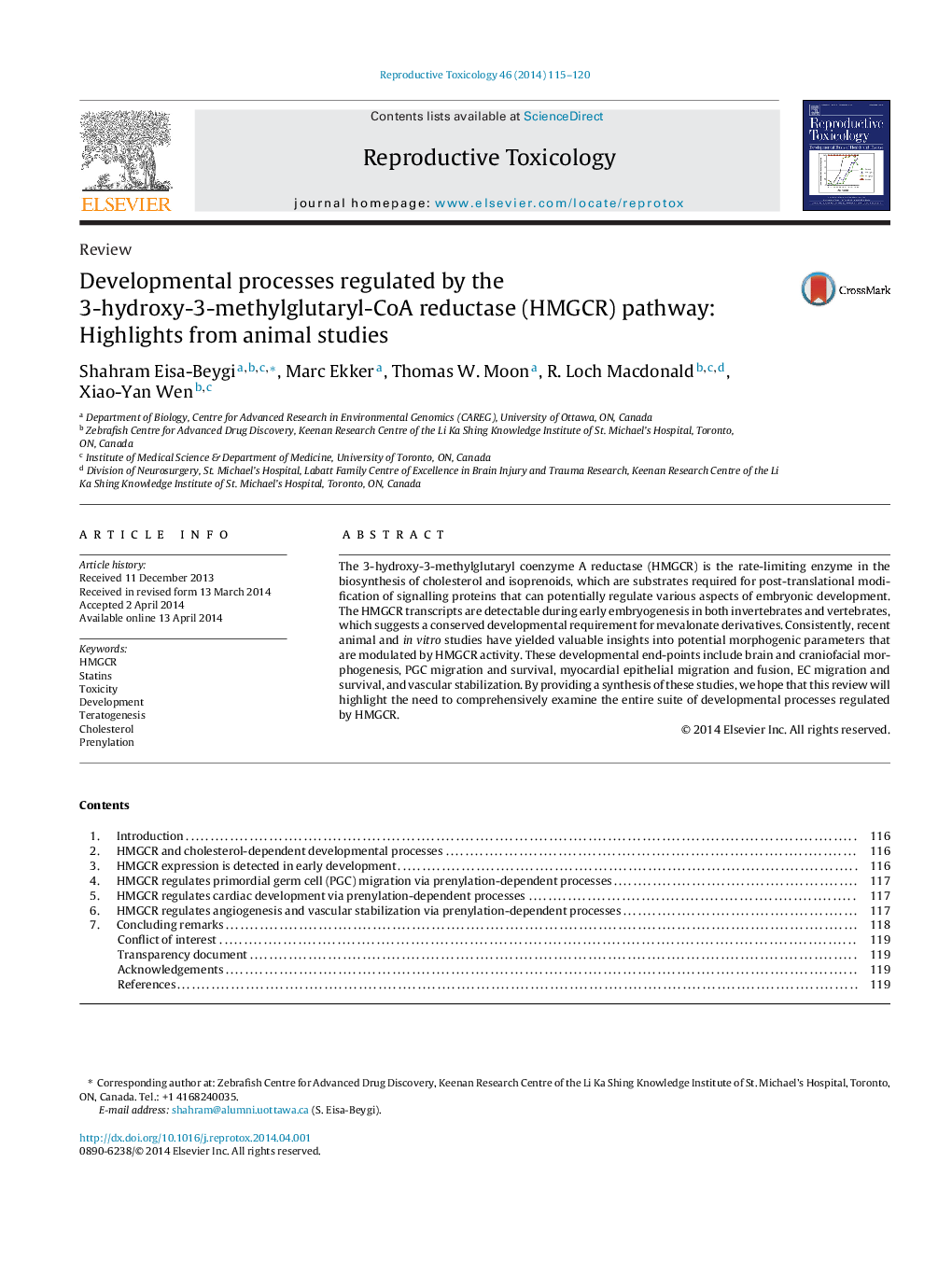| Article ID | Journal | Published Year | Pages | File Type |
|---|---|---|---|---|
| 5858902 | Reproductive Toxicology | 2014 | 6 Pages |
Abstract
The 3-hydroxy-3-methylglutaryl coenzyme A reductase (HMGCR) is the rate-limiting enzyme in the biosynthesis of cholesterol and isoprenoids, which are substrates required for post-translational modification of signalling proteins that can potentially regulate various aspects of embryonic development. The HMGCR transcripts are detectable during early embryogenesis in both invertebrates and vertebrates, which suggests a conserved developmental requirement for mevalonate derivatives. Consistently, recent animal and in vitro studies have yielded valuable insights into potential morphogenic parameters that are modulated by HMGCR activity. These developmental end-points include brain and craniofacial morphogenesis, PGC migration and survival, myocardial epithelial migration and fusion, EC migration and survival, and vascular stabilization. By providing a synthesis of these studies, we hope that this review will highlight the need to comprehensively examine the entire suite of developmental processes regulated by HMGCR.
Related Topics
Life Sciences
Environmental Science
Health, Toxicology and Mutagenesis
Authors
Shahram Eisa-Beygi, Marc Ekker, Thomas W. Moon, R. Loch Macdonald, Xiao-Yan Wen,
